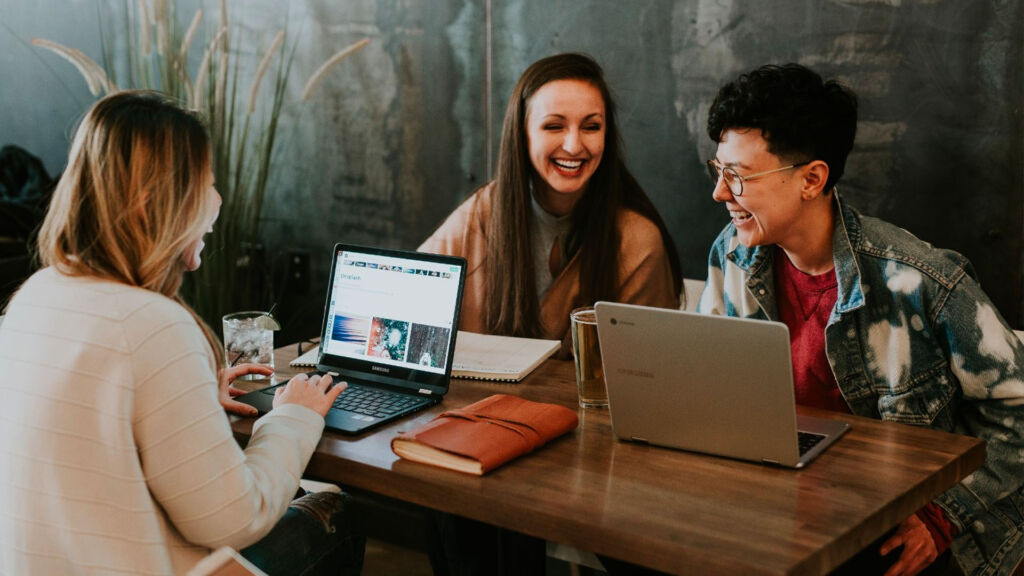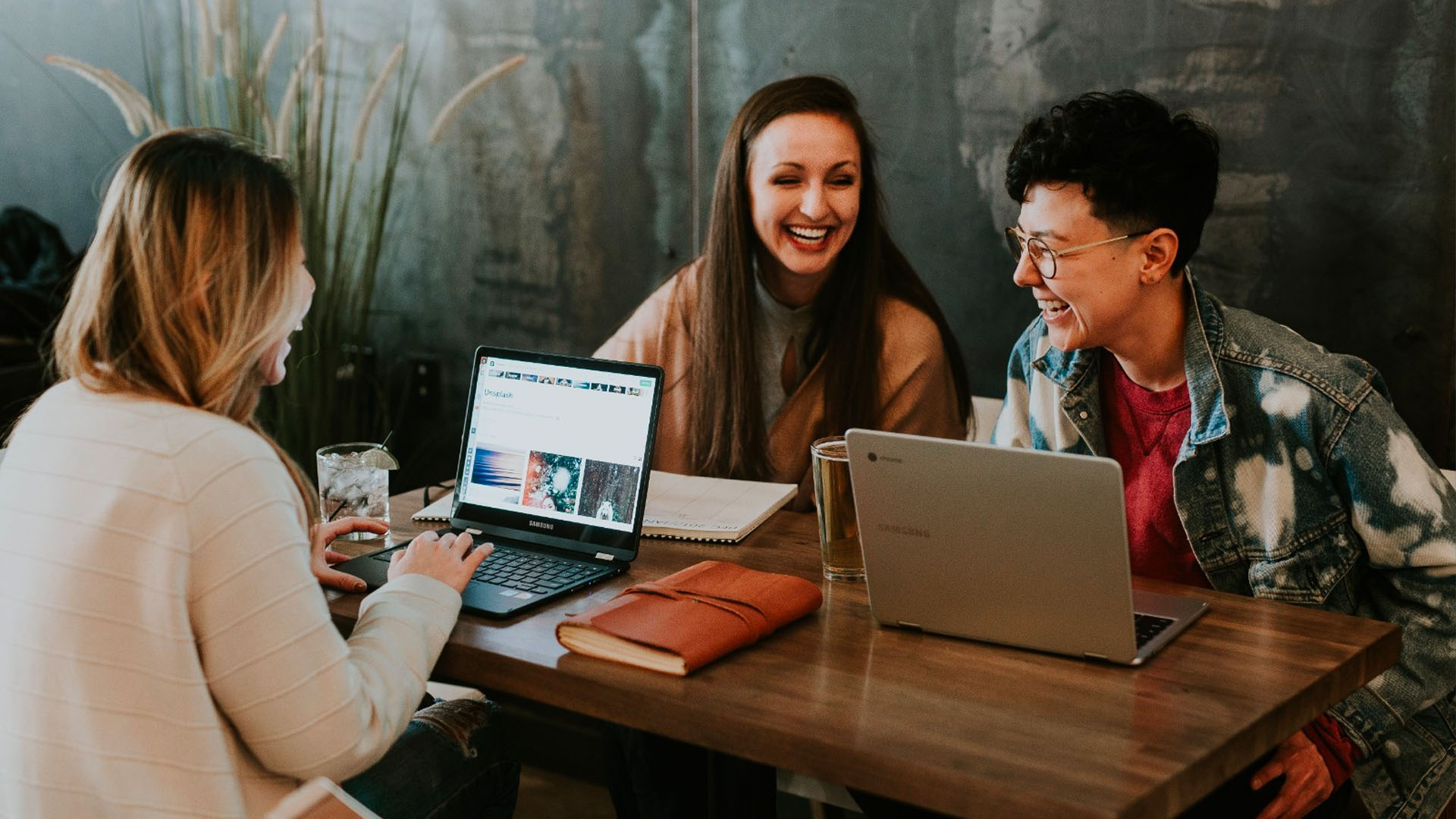How do you deliver and receive content while teaching your students? Teaching virtually and integrating technology is now a staple in classrooms. Recently, I partnered with Laura Christie on a project titled, “Don’t Drop the LMS, Keep ‘em Learning!” for the Keep Indiana Learning YouTube channel. What made our partnership dynamic is that she teaches using Canvas, and I do not. Even though she uses one specific Learning Management System (or LMS), together we wanted to uncover the “why” behind the investment and share a candid discussion about what students and teachers can accomplish if they use a LMS or not.
In my opinion, a Learning Management System is a technology platform or software application that can store, deliver and receive information electronically. In the education world, teachers typically use a LMS as a course management system which helps with creating content, tracking student performance and serves as a one-stop shop for students. Laura and I found that educators who do not have access to a LMS, such as Canvas or Schoology, typically use a content management system, such as Google Classroom or Apple Schoolwork (Ideas taken and adapted from Alice Keeler’s website).
In our presentation, we shared a link to The Study Hall’s resource: 40 ways to use Canvas LMS in the classroom. Regardless if you teach using an LMS or not, you are most likely already familiar with many of these “actionable tips and tricks.” Below you’ll see a small sample of what we discussed as “best strategies for using an LMS” along with ideas for non-LMS classrooms.

LMS: You can use the accessibility checker in Canvas to meet the needs of all students.
Non-LMS: Train and expect students to use accessibility features on their device and within software tools. Incorporating visual representation and asking students to follow along with the lesson using a screen reader or speech to text tools can assist all learners. A few tools I’ve used to ensure that every child can respond are iPad accessibility tools, SeeSaw, Screencastify, Loom, Class Dojo, etc.
LMS: You can offer multiple tools for meeting the needs of learners which connect to UDL Guidelines of Representation.
Non-LMS: Allow students to demonstrate their knowledge in several ways, like typing their answers, taking a picture, creating an infographic or book, uploading a video or audio clip. This can be done in Google Classroom, Apple Schoolwork, SeeSaw, email, virtual discussion boards (Padlet or Flipgrid).
LMS: Students can return to classroom materials to review.
Non-LMS: A topic can be created in Google Classroom or Apple Schoolwork for posting general materials or a rubric. These may also be attached to an assignment in your chosen platform.
LMS: Parents can stay connected to the instructional resources. Canvas offers parents to be observers.
Non-LMS: Google Classroom will send parents a weekly newsletter or summary providing a snapshot of what was assigned. SeeSaw has a family app version that can connect home and school. Teachers may also utilize classroom communication tools such as Bloomz, Class Dojo or Remind. These tools along with others can “push” the notifications right to the parents.
LMS: Student work becomes a digital collection for assessing and monitoring growth.
Non-LMS: Google Classroom, Apple Schoolwork, SeeSaw, etc offer a digital folder that can “travel” with a student throughout their academic journey.
LMS: Create deeper dialogues by asking students to post their thoughts using Discussions; this gives students who may be too shy to speak up in class a voice.
When I want to create dialogue by asking students to post their thoughts, I can use the same digital “discussion board” tool everytime; such as Flipgrid, Padlet, Trello, Google Slides, etc.
LMS: Create virtual “gallery walks” with digital artifacts, giving students a place to display their work proudly.
Non-LMS: When hosting virtual gallery walks so that students can provide feedback and have opportunities to share strategies, I can use a digital “discussion board” tool that is commonly used in my classroom. Examples are Flipgrid, Padlet, Trello, Google Slides, Google Forms, etc.
LMS: Teachers benefit from having a community of educators across the district to collaborate and innovate together.
Non-LMS: Social Media (Twitter, Facebook, Instagram), SeeSaw Community, Google Drive, certification opportunities in a specific tool or software application (Apple Teacher, Google Certified Educator, Nearpod Pioneer, etc) are all ways that educators work together.
In a recent study conducted by Capterra, Laura and I found that most teachers have been using their LMS for 5 years or less. This piece of data suggests to me that now is when teachers are truly “unpacking the what, why and how” for meaningful integration of technology into their classroom community. As teachers continue to perform “self-system-checks” and consider the many ways a management system can assist the learning experience, I hope that the “actionable tips and tricks” listed above can help encourage all to know that there’s many options available.
Upon conclusion of my presentation with Laura, I did a “self-system-check.” I thought, “Am I missing out because I don’t have a LMS? Are my students?” While there are great advantages that a LMS can provide, I am confident that my students are exposed to and learning via the many strategies listed above. If I embrace the idea of integrating multiple technology products as opposed to having those options built in, if I explicitly instruct my students to use a small variety of multi-functional tools, then I can curate a learning experience for my students while still providing what a LMS considers to be best practices.
I’d like to know, what strategies do you use to “keep ‘em learning, LMS or not?” Connect with me on Twitter @IUStevens.
Resources
Please login or register to claim PGPs.
Alternatively, you may use the PGP Request Form if you prefer to not register an account.



